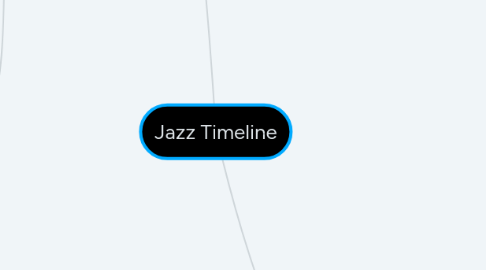
1. Roots of Jazz
1.1. Blues (late 19th century)
1.1.1. Characteristics
1.1.1.1. form of vocal and instrumental music
1.1.1.2. vocal blues is immensely personal
1.1.1.3. lyrics have many three line stanzas with the same form
1.1.2. Composers/Performers
1.1.2.1. Ray Charles
1.1.2.2. Louis Armstrong
1.1.2.3. Robert Johnson
1.1.3. Robert Johnson CrossRoads - Cross Road Blues Song and Lyrics
1.2. Ragtime (1890s- 1915)
1.2.1. Characteristics
1.2.1.1. performed at a moderate march tempo
1.2.1.2. rhythms inspired by African American folk music
1.2.1.3. several melodies of similar character
1.2.2. Composers/Performers
1.2.2.1. James Scott
1.2.2.2. Eubie Blake
1.2.2.3. Jelly Roll Morton
1.2.3. The Ragtime Dance - SCOTT JOPLIN (1906)
1.3. Brass Bands
1.3.1. Characteristics
1.3.1.1. musical ensemble/military band
1.3.1.2. all brass instruments with a percussion section
1.3.1.3. trumpet, trombone, clarinet, and a saxophone
1.3.1.4. blend of military music and African folk music
1.3.2. Composers/Performers
1.3.2.1. Olympia Brass Band
1.3.2.2. Harold Dejan
1.3.2.3. Michael White
1.3.3. Rebirth Brass Band- Feel Like Funkin It Up
2. The first three major style periods of jazz
2.1. Early Jazz (Chicago/New Orleans 1900-1930)
2.1.1. Characteristics
2.1.1.1. played by a small group of around 5 to 8 performers
2.1.1.2. trumpet, clarinet, and trombone
2.1.1.3. polyphonic texture
2.1.2. Composers/Performers
2.1.2.1. Louis Armstrong
2.1.2.2. Roy Eldridge
2.1.2.3. Earl Hines
2.1.3. Louis Armstrong - When The Saints Go Marching In
2.2. Swing (1935-1945)
2.2.1. Characteristics
2.2.1.1. played by big bands that had powerful sounds
2.2.1.2. saxophones, brass, and rhythms
2.2.1.3. main melody was accompanied by the saxophones playing extended chords or by playing short repeated phrases with brass instruments
2.2.1.4. saxophones began to be the most important solo instruments during this era
2.2.2. Composers/Performers
2.2.2.1. Duke Ellington
2.2.2.2. Fletcher Henderson
2.2.2.3. Johnny Hodges
2.2.3. Duke Ellington - It don't mean a thing (1943)
2.3. Bebop (early to mid 1940s)
2.3.1. Characteristics
2.3.1.1. Complex style mainly for groups of 4 to 6 players
2.3.1.2. meant for attentive listening, not for dancing
2.3.1.3. sophisticated harmonies, unpredicted rhythms, and unusual chord progression
2.3.1.4. the beat was fast
2.3.1.5. pizzicato bass and cymbal
2.3.1.6. began and ended with a soloist playing the main theme
2.3.2. Composers/Performers
2.3.2.1. Charlie Parker
2.3.2.2. Miles Davis
2.3.2.3. Bud Powell
2.3.3. Miles Davis & Charlie Parker - A Night In Tunisia

